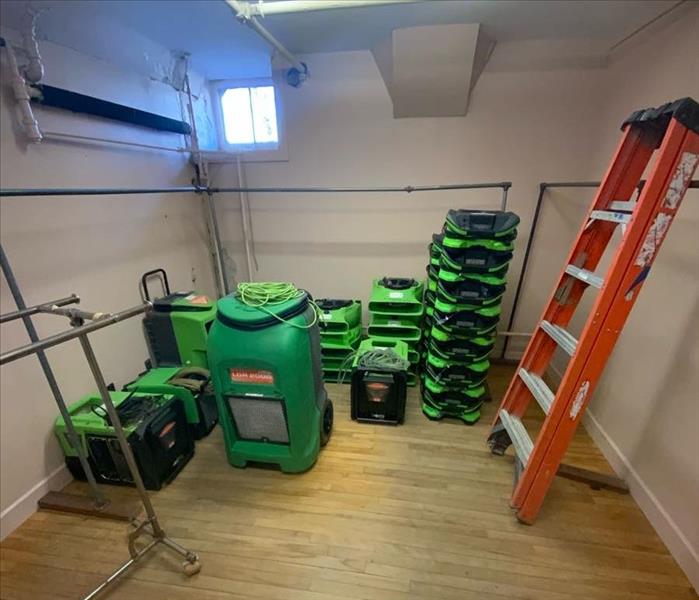How proper dryout processes can save your hardwood floors.
4/1/2024 (Permalink)
Proper dryout processes are crucial for saving hardwood floors after water damage. Here's how:
Swift Action: Promptly addressing water damage is essential to prevent irreversible harm to hardwood floors. The longer water sits on the surface, the greater the risk of warping, buckling, and mold growth. SERVPRO® responds quickly to water damage emergencies, implementing effective drying techniques to salvage hardwood floors.
Assessment: Upon arrival, SERVPRO technicians assess the extent of water damage to the hardwood floors. They identify the type of water involved (clean, gray, or black), the severity of the damage, and the best course of action for restoration.
Water Extraction: Using specialized equipment such as powerful pumps and wet/dry vacuums, SERVPRO extracts standing water from the hardwood floors. This step is crucial for preventing further absorption of water and minimizing damage to the wood.
Moisture Detection: SERVPRO technicians use moisture detection tools to determine the moisture levels within the hardwood floors and subflooring. This allows them to identify areas that require targeted drying and ensure thorough moisture removal.
Drying Equipment: SERVPRO utilizes advanced drying equipment, including air movers and dehumidifiers, to facilitate the drying process. Air movers generate airflow across the surface of the hardwood floors, while dehumidifiers remove excess moisture from the air, speeding up evaporation and drying.
Specialized Techniques: SERVPRO employs specialized drying techniques tailored to hardwood floors, such as tenting and directed airflow. These techniques help ensure even drying and prevent damage to the wood, minimizing the risk of warping or cupping.
Monitoring and Adjustments: Throughout the drying process, SERVPRO monitors moisture levels closely and makes adjustments as needed. This may involve repositioning drying equipment, adjusting temperature and humidity levels, and conducting regular inspections to assess progress.
Surface Restoration: Once the hardwood floors are thoroughly dried, SERVPRO technicians assess any remaining damage and determine the best approach for restoration. This may involve sanding, refinishing, or replacing damaged boards to restore the floors to their preloss condition.
By following proper dryout processes, SERVPRO can effectively save hardwood floors from water damage, preserving their beauty, durability, and value. With swift action, advanced equipment, and specialized expertise, SERVPRO helps homeowners mitigate damage and restore their hardwood floors to their original state.

 24/7 Emergency Service
24/7 Emergency Service
